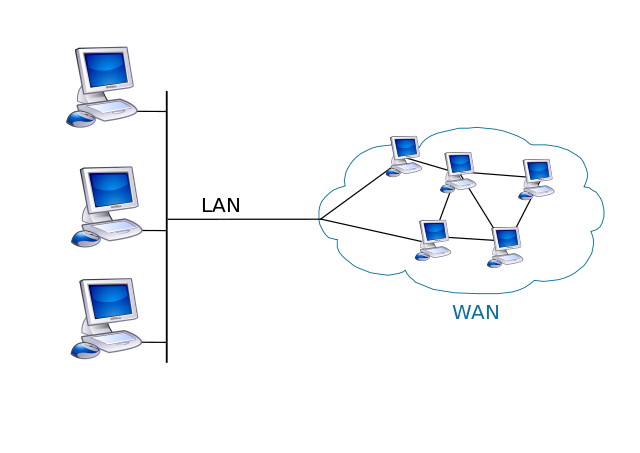Types of networks: Difference between revisions
Mr. MacKenty (talk | contribs) |
Mr. MacKenty (talk | contribs) |
||
| Line 7: | Line 7: | ||
== Do you understand this topic? == | == Do you understand this topic? == | ||
At the minimum, you should be able to: | |||
# Identify the different types of networks | # Identify the different types of networks | ||
Revision as of 08:59, 25 May 2016

Networks[1]
There are different types of networks. Common types of networks are: WAN and LAN. There are other types of networks as well: SAN, MAN, BAN, IAN and others. Each network type helps us understand the purpose, design goals, and scale of the network. For example if we say a network is a LAN, we can assume it is a local network, probably in one building or in a reasonably restricted area. We might make an assumption that a LAN has a certain number of devices connected to it. However, if we say a network is a WAN, we might assume it is much larger, and designed to accommodate a much, much larger number of devices.

A visual representation of a LAN and a WAN.[2]
Do you understand this topic?[edit]
At the minimum, you should be able to:
- Identify the different types of networks
- Outline the major differences between types networks
Do you have an advanced understanding about this topic?[edit]
If you want an advanced understanding of this topic, try answering the questions below:
- Explain the process of encapsulation and de-enacapsulation
- We use the OSI model to help us understand where to look for problems. Describe what tools you would use to diagnose which levels of the OSI model.
What you MUST know about this topic[edit]
- Identify different types of networks. Level 2
References[edit]
- ↑ http://www.flaticon.com/
- ↑ By Gateway_firewall.svg: Harald Mühlböckderivative work: Ggia (talk) - Gateway_firewall.svg, CC BY-SA 3.0, https://commons.wikimedia.org/w/index.php?curid=15177011